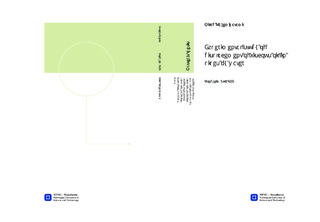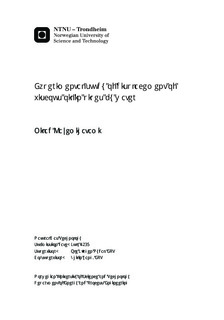| dc.contributor.advisor | Nydal, Ole Jørgen | nb_NO |
| dc.contributor.advisor | Yang, Zhilin | nb_NO |
| dc.contributor.author | Kazemihatami, Milad | nb_NO |
| dc.date.accessioned | 2014-12-19T11:51:13Z | |
| dc.date.available | 2014-12-19T11:51:13Z | |
| dc.date.created | 2013-10-02 | nb_NO |
| dc.date.issued | 2013 | nb_NO |
| dc.identifier | 653088 | nb_NO |
| dc.identifier | ntnudaim:10167 | nb_NO |
| dc.identifier.uri | http://hdl.handle.net/11250/235301 | |
| dc.description.abstract | This study is specifically concerned with the understanding of real restart procedure that is very crucial for prediction of oil-water columns displacement after un-expected shut down at water-viscous crude oil transportation. This issue gets more important for subsea pipeline which is generally located in ups and downs topology and in average cold medium. At subsea pipelines the risk of formation of oil-water columns is high and in addition the viscosity of crude oil gets higher due to heat transfer with sea water.The present study has reported the experimental activities carried out to investigate of viscous oil displacement in pipes by water. Basic aspects regarding oil-water flow, viscosity of crude oil and flow assurance have been reviewed initially. The tests were established at the acrylic transparent 60-mm internal diameter pipe at horizontal/inclined test rig and in the small-scale of M-shaped jumper. In addition, a series of simulations have been run in LedaFlow® 1D. The experimental setup has been designed and constructed at NTNU multiphase laboratory. The setup was prepared for movable visual capturing such that a series of lightening and camera carrier have been installed. A total of 56 individual experiments were conducted and the measurements were made for different oil and water flow rate in horizontal and inclined pipe line. Some tested cases were simulated LedaFlow® 1D and results are compared. Both qualitatively and quantitatively results of the experiments and observation from displacement tests have been documented in this report. Most of outcomes indicate that the front of shape of propagation interface is changing along the pipe. Droplets accumulation and wavier interface have been observed at the end section of the pipe in compare to beginning section. By experimental analysis was found that the minimum superficial velocity of water in order to remove all residual oil at M-shaped jumper is around 0.38 m/s. Concerning LedaFlow® 1D simulation efforts, the front shape prediction for number of tests was running and corresponded results have been stated. | nb_NO |
| dc.language | eng | nb_NO |
| dc.publisher | Institutt for energi- og prosessteknikk | nb_NO |
| dc.title | Experimental study of displacement of viscous oil in pipes by water | nb_NO |
| dc.type | Master thesis | nb_NO |
| dc.source.pagenumber | 72 | nb_NO |
| dc.contributor.department | Norges teknisk-naturvitenskapelige universitet, Fakultet for ingeniørvitenskap og teknologi, Institutt for energi- og prosessteknikk | nb_NO |

